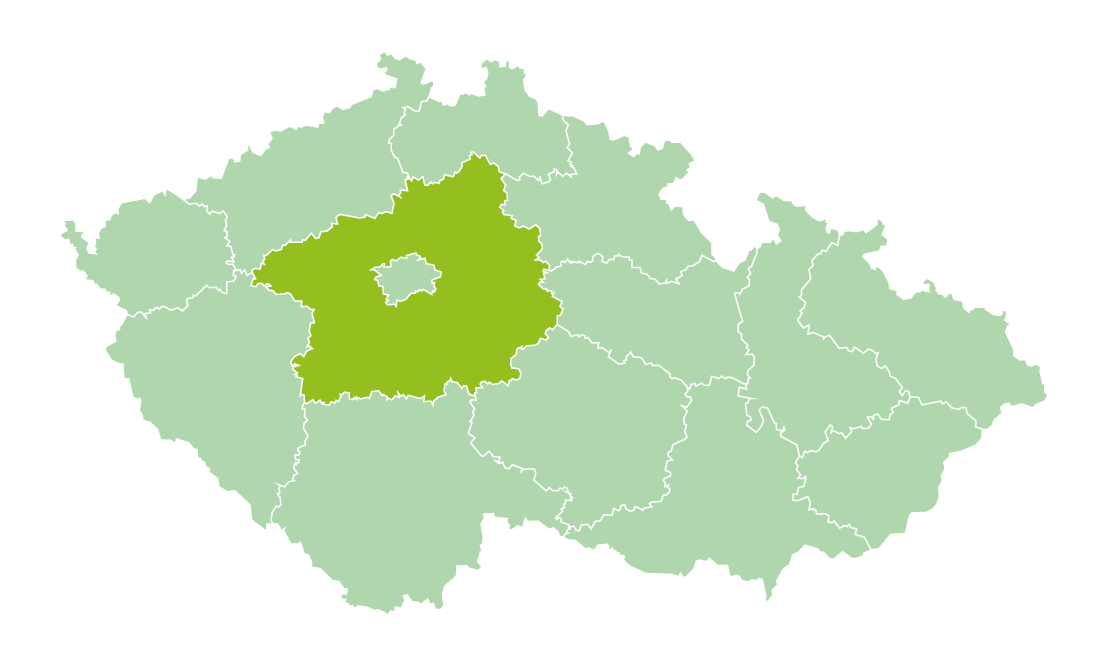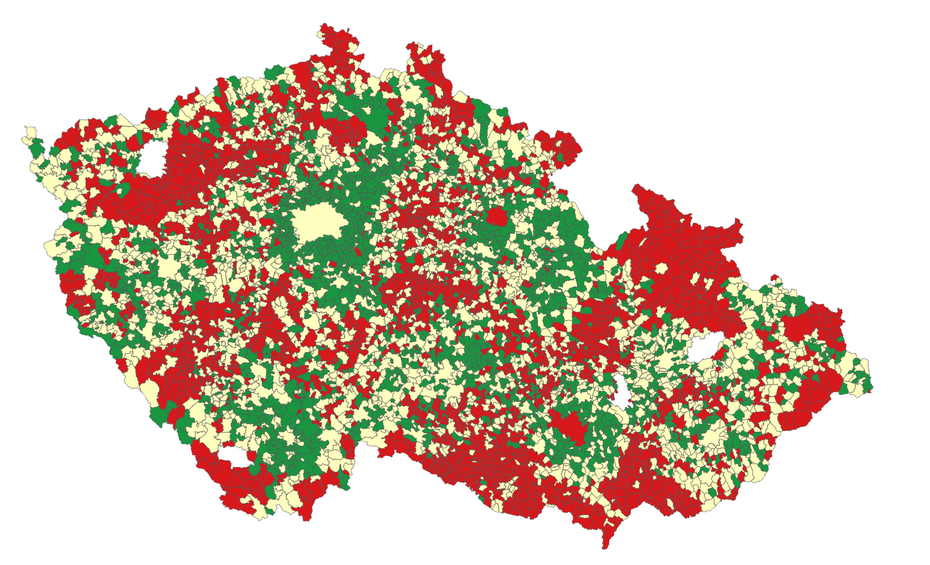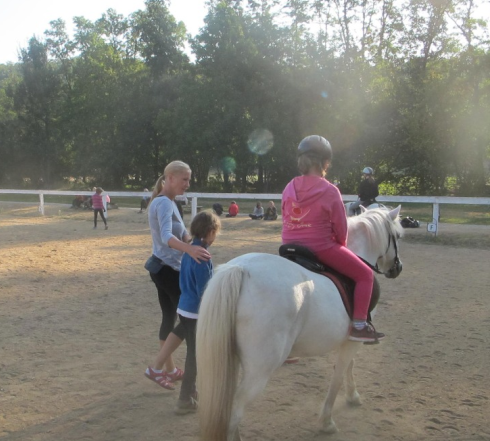| PILLAR | STRENGTHS | WEAKNESSES | OPPORTUNITIES | THREATS |
| 1. Availability of public and other services | S1.01 Functional connection with the capital city Prague | | O1.01 High density/network of roads across the region | |
| S1.02 Functional connection with the capital city Prague, which is the natural centre of the Central Bohemian Region | W1.02 Weak interconnection between/among local centres/towns | | |
| | W1.03 Full capacity of railway lines to commute to the capital city Prague | | |
| S1.04 Good transport accessibility to most parts of the region to both Prague and regional centres | | O1.04 New technologies available/using to enhance quality of public transport infrastructure | |
| | | O1.05 Willingness of inhabitants to prefer public transport | |
| | W1.06 Insufficient institutional coordination in the healthcare sector with the capital city Prague Indebtedness of some hospitals whose financial problems may destabilize the health care system in the region | | T1.06 An aging population will pose increased risks to existing systems and services Limited role and competence of the region in health policy (health insurance companies are the key players) Missing systems of quality assessment of health facilities at the level of state administration, professional organizations and health insurance companies Extinction of commercial and public services in peripheral areas |
| | W1.07 Intra-regional differences in capacities of kindergartens and elementary schools, endangered general education in peripheries, capacity insufficiency in suburbs | | T1.07 Lack of funds from municipal budgets to increase the capacity of kindergartens, primary schools in some locations Lack of good teachers and professionals due to their low financial remuneration |
| | | | T1.08 Lack/declining of teachers and professionals due to the generational change |
| | W1.07 Intra-regional differences in capacities of kindergartens and elementary schools, endangered general education in peripheries, capacity insufficiency in suburbs | | |
| S1.10 High number of ICT service providers | W1.10 Insufficient high-speed internet infrastructure in the whole Central Bohemia Region | O1.10 Starting of 5G pilot activities in the Czech Republic | T1.10 High number of small municipalities whose representatives do not appreciate the importance of ICT/high-speed internet infrastructure |
| | W1.11 Low involvement of municipalities, lack of standardization of e-government, insufficient information of citizens about existing possibilities | O1.11 Using of assistive technologies, telemedicine and IT technologies for monitoring, target person support and management of the involvement of carers and relatives of health and social services started | |
| S1.12 Importance of work-life balance is more discussed | W1.12 Willingness of employer to offer remote working is still low (changes due to current situation with COVID-19 are expected) | O1.12 Development of flexible employment and digitalisation can start moving people to the countryside (in the case of the Central Bohemia Region moving to its outer peripheral areas) | |
| S1.13 Low level criminal offences | | | |
| 2. Recreation / social activities | S2.01 Diverse natural and cultural-historical attractions (including UNESCO sites) | | O2.01 Number of community activities | |
| | | | T2.02 Insufficient systematic financial security of local cultural activities |
| | | O2.03 Using of buildings owned by the municipality for various purposes | |
| | W2.04 Low quality of services in peripheral areas of the region | | |
| | | O2.05 Community activities support the local identity | |
| 3. Living condition, quality of life and standard of living | S3.01 The most populous region in the Czech Republic and the most profitable in terms of population in the long term | W3.02 High price or properties in part of the region close to Prague | O3.02 Affordable price of properties in peripheral parts of the region | |
| S3.02 Strong local identity | | | |
| S3.03 High quality of environment | W3.03 Air pollution related to using of local fireplaces (namely in areas with no gasification) | O3.03 Focus on wellbeing in new strategic documents related to the regional development | |
| | W3.04 Selective inner migration to certain parts of the region, polarity in population growth | | T3.04 Insufficient integration of newly arrived foreign workers into local communities |
| S3.05 No political or social conflicts in the region | | | |
| 4. Demographic & human capital | S4.01 Relatively young age structure of population compared to the rest of the Czech Republic Newcomers are mostly young people with higher education and qualifications and, on average, higher incomes | | O4.01 Diversified age structure of inhabitants in municipalities Continuing migration of young people from socially upper classes to the hinterland of Prague | |
| S4.02 Equal gender structure of inhabitants | | | |
| | | O4.03 The Central Bohemian Region has one of the highest birthrate in comparison with other regions of the Czech Republic | |
| S4.04 Low unemployment rate in comparison with other regions of the Czech Republic and EU regions The labour market in the Central Bohemian Region and Prague is functionally interconnected, functioning uniformly regardless of administrative division | W4.04 Selective migration to certain parts of the region, polarity in population growth | O4.04 Interest of talented people from abroad for work in the region | |
| | W4.05 Low level of local identity of newcomers (especially in suburban areas) | | |
| | | | T4.06 Insufficient systematic financial security of local activities and services |
| 5. Business, economy & innovation | S5.01 A large number of research institutes and the emergence of new research infrastructures | W5.01 Weak links between research and business sectors, inconsistencies between the main focus of private and public research | O5.01 Interest of talented people from abroad to work in the region | |
| | W5.02 Weak innovation demand of the public sector - the state and public administration do not support innovative solutions in their area of competence Domestic companies have considerably lower labour productivity and growth rates than foreign firms | | |
| S5.03 Foreign companies play a more important role in the economy compared to other regions of the Czech Republic | W5.03 Endogenous Czech business is not supported under same conditions as multinational companies | | |
| | W5.04 Low and stagnant rate of entrepreneurial activity in peripheral parts of the region | | |
| | | O5.05 Strengthening of youth entrepreneurship Innovative and creative vouchers as a financial tool to support local companies | |
| | | O5.06 Ongoing transition to the circular economy Supporting of local production and shortening of supply chains Opportunities for agrotourism (increasing of entrepreneurs in this field) | T5.06 Loss of job opportunities in small municipalities (“brain drain” to the capital city Prague) |
| S5.07 Manufacturing, especially the automotive, engineering and food industries, has a key role in the economy | | O5.07 Digital transition - opportunities for new economic activities and productivity growth | |
| | | O5.06 Ongoing transition to the circular economy in agriculture (including energy recovery) Supporting of local production and shortening of supply chains Opportunities for agrotourism (increasing of entrepreneurs in this field) | |
| 6. Social and cultural aspects of rural areas | S6.01 Equal gender structure | | | |
| | | O6.02 Qualitative change of “typical citizen of retirement age” - active in both social and economic life | |
| S6.03 Low level criminal offences | | | |
| | | O6.04 Bringing life to local communities through the transition of new residents | T6.04 Insufficient integration of newly arrived foreign workers into local communities |
| | | O6.05 Number of community activities Community activities support the local identity | |
| 7. Environment & Biodiversity | S7.01 Quality natural environment | | | |
| S7.02 Diverse natural and cultural-historical attractions (including UNESCO sites) | | | |
| S7.03 Nature preservation, supporting of sustainability | W7.03 Inconsistent attitude towards interventions against bark beetle in protected areas | | |
| | | O7.04 Increasing number of entrepreneurs in the field of bioproduction | T7.04 Unsustainable land management, landscape water scarcity and biodiversity decline |
| S7.05 High number of community activities in the field of protection of environment | | O7.05 Adaptation to climate change | |





